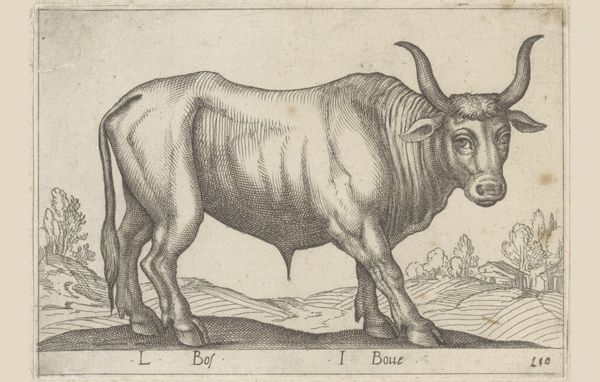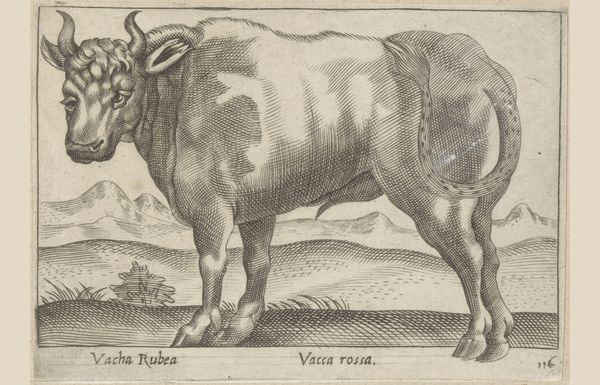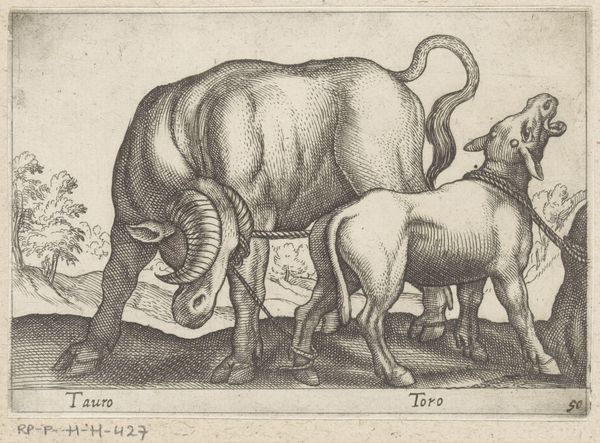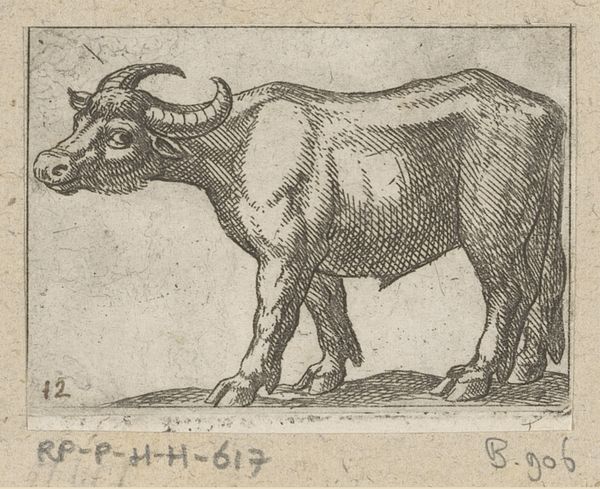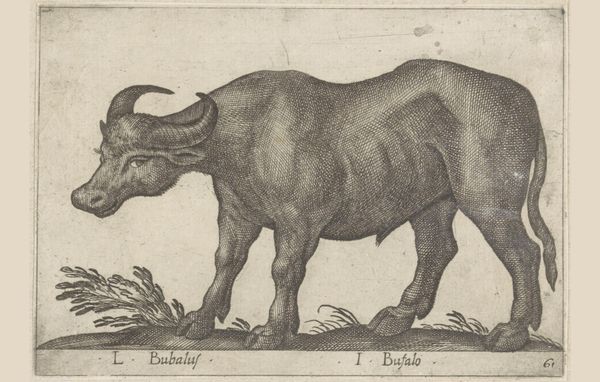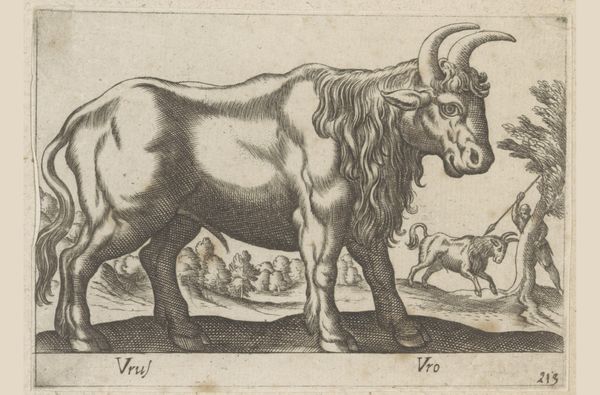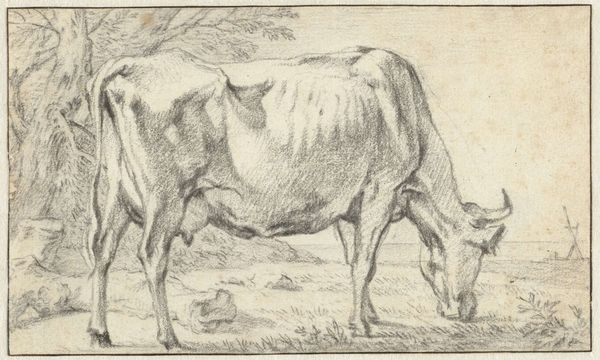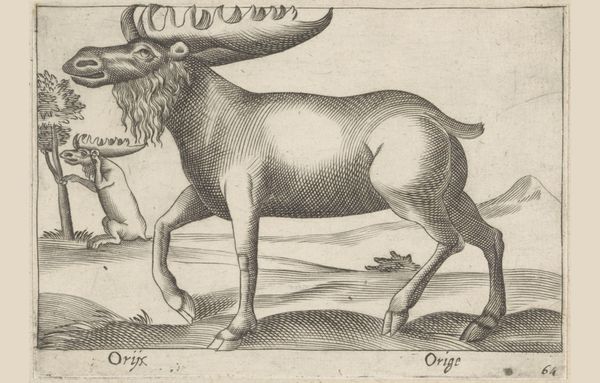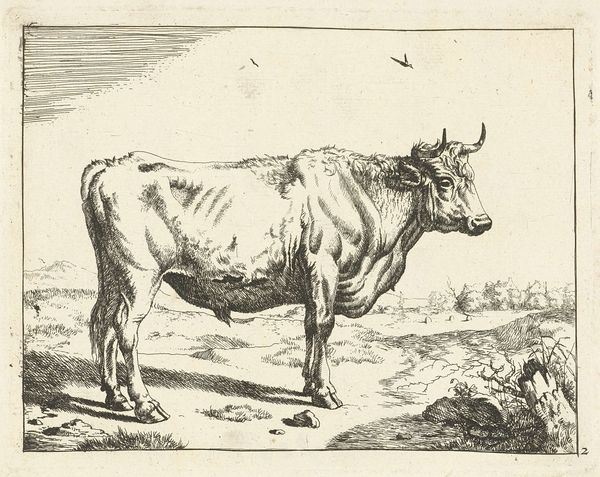
print, engraving
#
baroque
#
animal
# print
#
caricature
#
figuration
#
form
#
line
#
engraving
#
realism
Dimensions: height 95 mm, width 137 mm
Copyright: Rijks Museum: Open Domain
Curator: So, here we have "Rode vaars", or "Red heifer" an engraving by Antonio Tempesta, created before 1650. It's currently held here at the Rijksmuseum. The animal takes up most of the composition, doesn't she? What's your initial reaction? Editor: Stark and perhaps unsettling. The etching, spare as it is, almost feels like a confrontation. She dominates the frame in an unidealized state. She's solid, weighty, almost defiant. It prompts a consideration of labor, production, the very real body beneath romantic pastoral visions. Curator: Indeed. Think about the visual vocabulary available to Tempesta: the Baroque, the emerging emphasis on realism… I see the cultural memory of the aurochs here, that primal bovine symbol of power. Her horns almost seem to mirror ancient images of a lunar deity, connecting her to cyclical renewal and power. Editor: I see that primal power too. It's compelling to consider what this image might communicate about social stratification. Owning cattle, land, wealth, all were implicated within oppressive economies for centuries, the "red heifer" herself carrying complicated class and gender associations. The almost scientific observation disrupts traditional Arcadian tropes by highlighting economic foundations of landscape. Curator: Yes, this is far from a cute farm animal. Her prominent, almost weary gaze, locks onto ours, demanding a recognition that transcends mere bucolic charm. The texture achieved with line work alone, a symphony of shades, builds presence beyond the iconographical importance. What could that kind of direct gaze elicit in the contemporary viewers of this engraving, when human dominance over nature and animals may not yet have seemed quite as inevitable or uncontested? Editor: A lot of tension. Her reality challenges the easy pastoral fantasy so prevalent then, just as those fantasies often occluded real life exploitation. This animal pushes through the cultural artifice with stubborn facticity. And yet it becomes increasingly challenging now to separate that facticity from looming ecological nightmares created by factory farming that turn livestock into mere commodities, a total erasure of any independent agency they might retain, such as is preserved, ironically, here. Curator: Such paradoxes keep our connections to artworks vibrant across time. Examining even a simple engraving helps expose continuities in how we frame both nature and labor itself. Editor: Absolutely, recognizing those complicated relationships is essential work, constantly interrogating what such an image says and continues to say in ever shifting contexts.
Comments
No comments
Be the first to comment and join the conversation on the ultimate creative platform.
